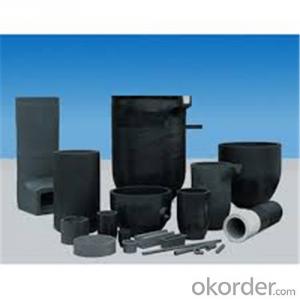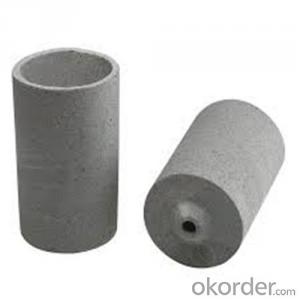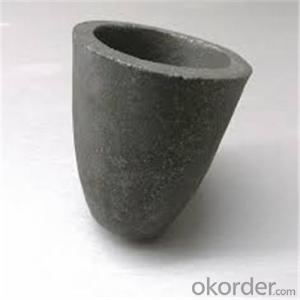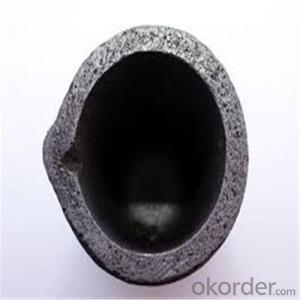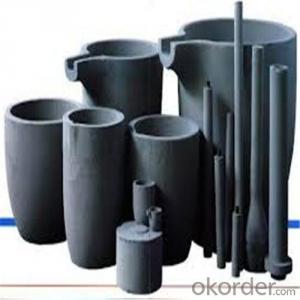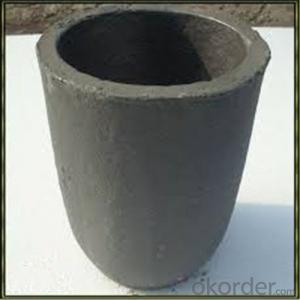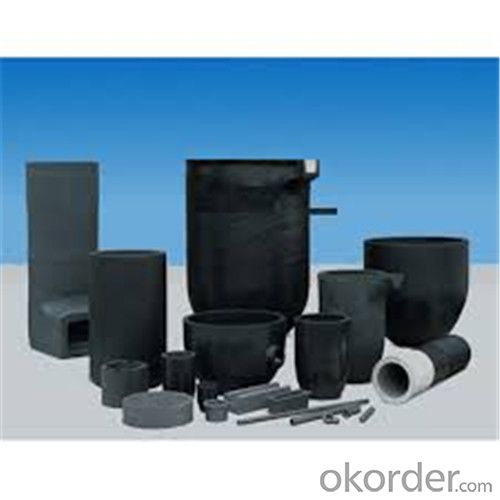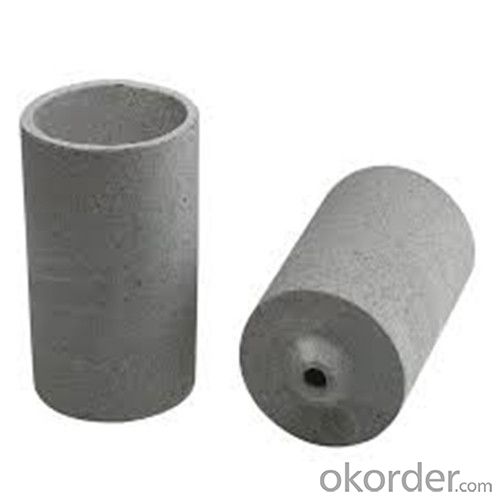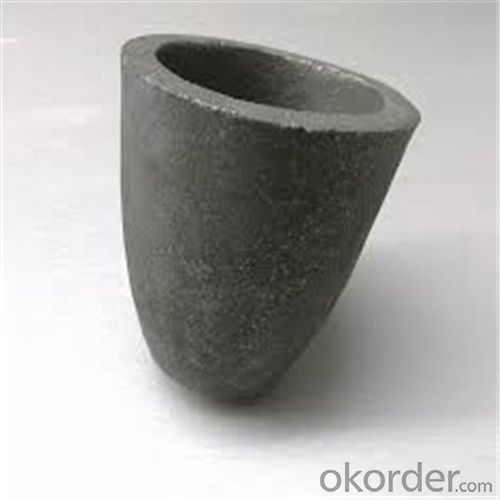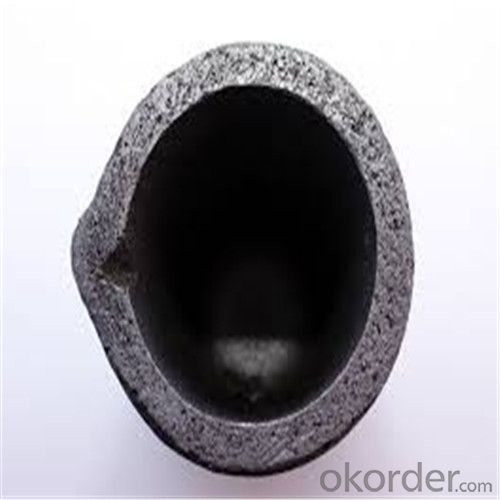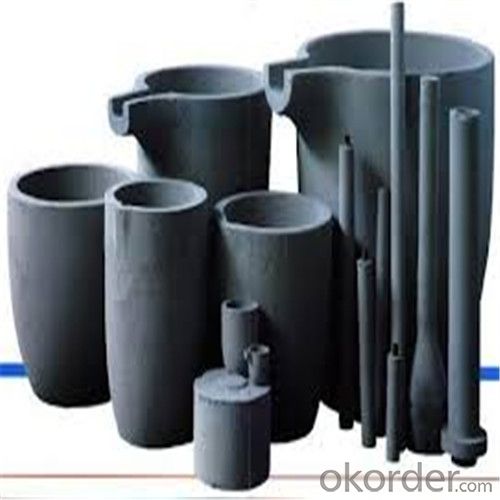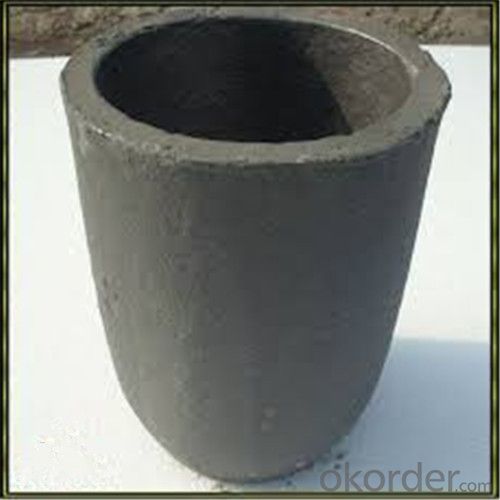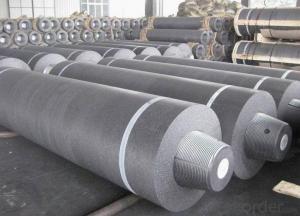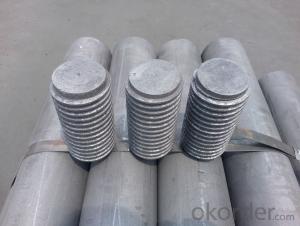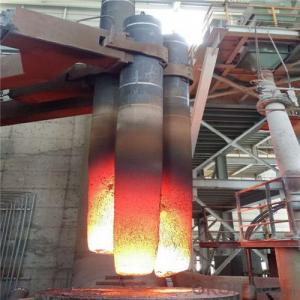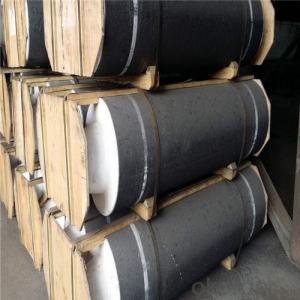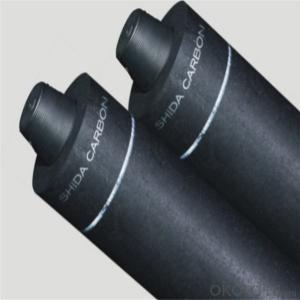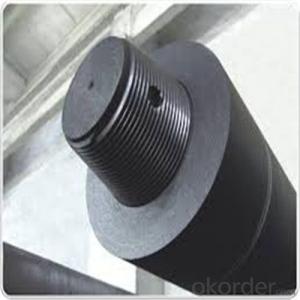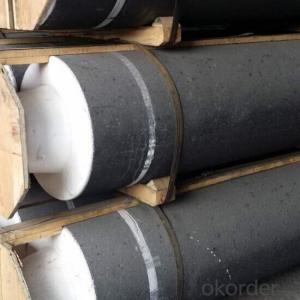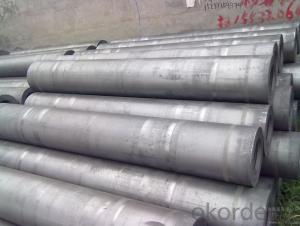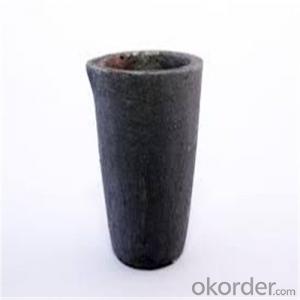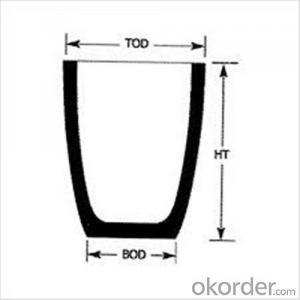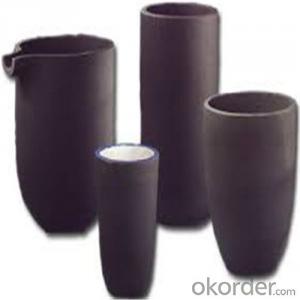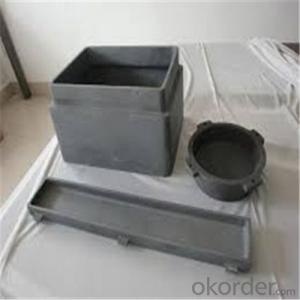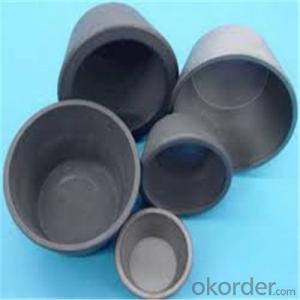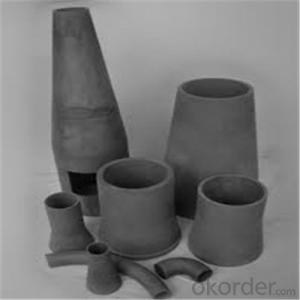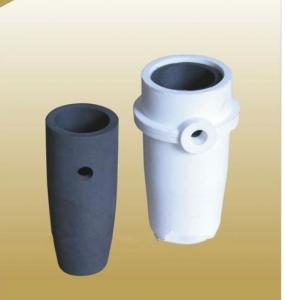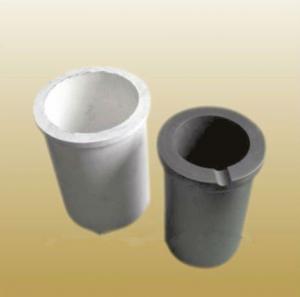Graphite Crucible Small - Refractory SIC Crucible for Brass/Aluminum
- Loading Port:
- Shanghai
- Payment Terms:
- TT OR LC
- Min Order Qty:
- 1 pc
- Supply Capability:
- 1000 pc/month
OKorder Service Pledge
OKorder Financial Service
You Might Also Like
Quick Details for Refractory Crucibles Sic Crucible For Melting Copper/Brass/Aluminum
| Type: | High Strength, graphite crucible crucible | Application: | melting metal | Height: | as your requirements |
| Composition: | High Pure | Top Diameter: | 10-600mm | Bottom Diameter: | 10-1000mm |
| Place of Origin: | China (Mainland) | Brand Name: | Model Number: | ||
| Color: | Black grey | Si3N4%: | 5min | Fe2O3%: | 0.7max |
| C%: | 30-45 | Apparent porosity: | 30max | Refractoriness: | 1680 |
| Bulk Density: | 1.71min | Using life: | >5000 hours | MAX temperature: | 1600c |
Packaging & Delivery
| Packaging Details: | Seaworty packing or as per customer's detail requirement of graphite crucible. |
| Delivery Detail: | within 20-30 days after confirm order of graphite cru |
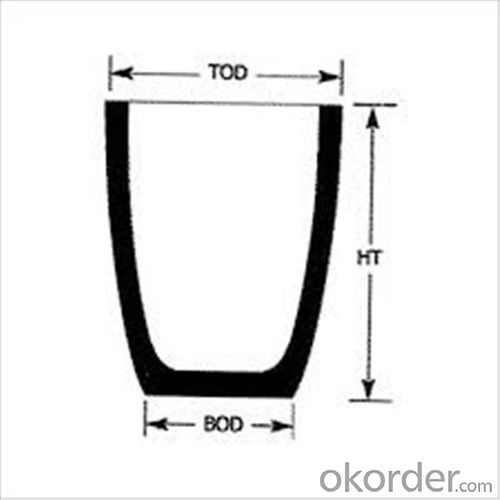
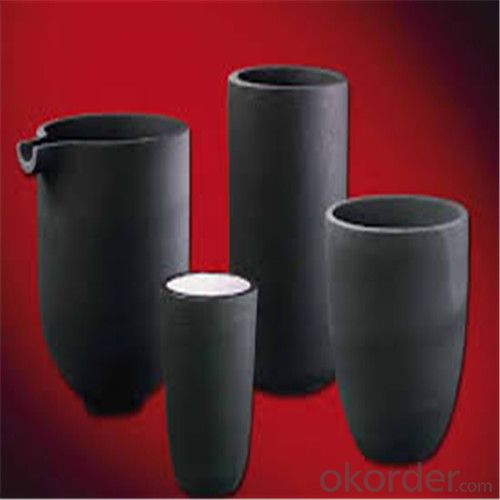
Refractory Crucibles Sic Crucible For Melting Copper/Brass/Aluminum
Physicochemical Properties
Type of Crucible | Type S | Type D |
Carbon Content/% | ≥38 | ≥45 |
Bulk Density/(g/cm3) | ≥1.70 | ≥1.85 |
Apparent Porosity/% | ≤29 | ≤21 |
Compression Strength/MPa | ≥20 | ≥25 |
Refractoriness/°C | ≥1400 | ≥1400 |
Type S: Clay graphite crucible
Type D: Isostatic pressing graphite crucible
Cited from CNS China National Standard of Graphite Crucible, which is solely drifted by TIANFU company.
Content Composition
C% | Sic% | AL2O3% | SIO2% |
45%-50% | 20%-30% | 10%-12% | 15-25% |
Packaging & Shipping
Package: Wooden case and wooden pallet or pack as customer's requirement of graphite crucible.
Delivery time: depend on distance, usually 20 days to 50days after deposit of graphite crucible.
We can supply the products according to customer's drawings, samples and performance requirement.
Other Products
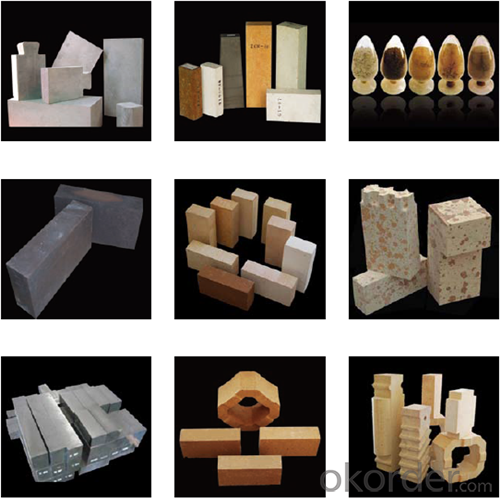
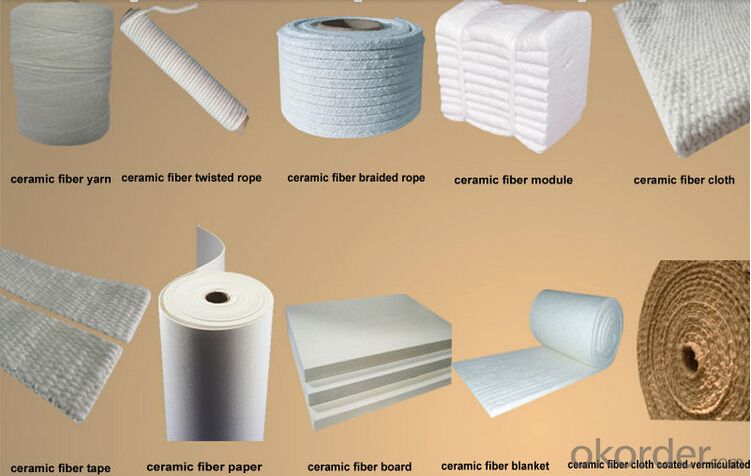
FAQ
1.What's your MOQ?
We will indicate the MOQ for each item in the quotation list. We accept the sample and trail order.
2.Can I negotiate the Prices?
Sure, we may consider discounts for bulk order of products.
3.How long will it take to complete my order?
For the stock items, we can arrange the shippment within 2~3days after received your payment. For the customized items, we will indicate the delivery time in the quotation list.
4.Can you give warranty of your products?
Yes, we extend a 100% satifisfaction guarantee on all items. Please feel free to provide timely feedback if you're not satisfied with N&D's Quality and Service. For the overseas orders, if there is a quality problem, please kindly to provide the picturers to show the problem by e-mail. We will provide the replacements to you at our cost according to actual conditions.
Welcome to visit our factory.
- Q: Can the graphite crucible be rinsed with water?
- Graphite crucibles can be rinsed with water. The graphite crucible will burst when heated.
- Q: Can graphite crucibles be used for melting and casting of non-ferrous metals?
- Yes, graphite crucibles can be used for melting and casting non-ferrous metals. Graphite has excellent thermal conductivity and high melting point, making it suitable for high-temperature applications. Additionally, graphite has good chemical resistance to most non-ferrous metals, making it an ideal material for crucibles used in the melting and casting process.
- Q: Can graphite crucibles be used for semiconductor manufacturing?
- No, graphite crucibles cannot be used for semiconductor manufacturing.
- Q: Who knows the method for determining the total iron content in iron ore?
- Iron is one of the most widely distributed metal elements in the earth, with an average content of 5% in the earth's crust and fourth after oxygen, silicon and aluminum in the element abundances. Iron minerals in nature are known to have 300 kinds, but in the current technical conditions, with industrial utilization value is mainly magnetite (iron containing 72.4% Fe3O4 (Fe2O3), hematite iron containing 70% (FeCO3) and siderite iron containing 48.2% (Fe2O3 / nH2O), limonite iron containing 48% ~ 62.9%).
- Q: Graphite products are mainly used in what industry?
- According to these characteristics, graphite products are widely used in the following areas of industry:1, refractory material: graphite and its products have the properties of high temperature resistance, high strength, in the metallurgical industry is mainly used to manufacture steel commonly used in graphite crucible, graphite as the protective agent of steel ingot, metallurgical furnace lining.2, conductive material: used for manufacturing the electrode, carbon nanotubes, carbon brush, and the positive electrode of the mercury rectifier in the electrical industry, graphite gasket, telephone parts, TV tube coating etc..3, for wear-resistant lubrication material: Graphite in the machinery industry often as a lubricant. Lubricants can not be used in high speed, high temperature, high pressure conditions, and graphite wear-resistant materials can be at 200~2000 degrees Celsius temperature in a high sliding speed, without lubricating oil work. Many devices for conveying corrosive media are made of graphite materials, piston cups, seals and bearings. They do not need to be lubricated when running. Graphite is many metal processing (drawing, drawing) the good lubricant.
- Q: What is the main function of graphite?
- As a conductive material: used for manufacturing the electrode, carbon nanotubes, carbon brush, and the positive electrode of the mercury rectifier in the electrical industry, graphite gasket, telephone parts, TV tube coating etc..
- Q: How do you prevent graphite crucibles from cracking during cooling?
- To prevent graphite crucibles from cracking during cooling, there are several measures that can be taken: 1. Gradual cooling: Graphite crucibles should be cooled slowly and gradually to prevent thermal shock. Rapid cooling can cause stress and lead to cracks. The crucible can be placed in a designated cooling area or inside an oven with controlled cooling rates. 2. Thermal insulation: Using thermal insulation materials such as ceramic fibers or refractory bricks can help regulate the cooling rate and minimize temperature gradients. These materials act as a buffer, preventing sudden temperature changes that can cause cracking. 3. Preheating and annealing: Before using a new graphite crucible, it is recommended to preheat it gradually to eliminate any moisture or volatile impurities. Additionally, annealing the crucible at a low temperature can help relieve internal stress and improve its resistance to cracking during subsequent usage. 4. Avoid direct contact with water: Graphite crucibles should not be exposed to direct contact with water or other coolants immediately after use or during the cooling process. Water can cause rapid cooling and thermal shock, leading to cracks. Instead, it is advisable to let the crucible cool naturally in a dry environment. 5. Proper handling and storage: Careful handling of graphite crucibles is crucial to prevent accidental impacts or drops that can cause cracks. When not in use, the crucibles should be stored in a dry and temperature-controlled environment to avoid exposure to excessive moisture or extreme temperature changes that could compromise their structural integrity. By following these preventive measures, the risk of cracking during cooling can be significantly reduced, ensuring the longevity and reliability of graphite crucibles.
- Q: Melting copper slag with a graphite crucible furnace can add any flux, in order to shorten the melting time and save fuel
- If you want to save fuel, it should be mainly due to the quality of the graphite crucible. The graphite content in the graphite crucible is higher
- Q: How do you prevent graphite crucibles from contaminating the melted material with carbon?
- To avoid carbon contamination from graphite crucibles in the melted material, there are several steps that can be taken: 1. Crucible preparation: Before using the crucible, it is crucial to prepare it properly. This involves heating the crucible to a high temperature, typically around 1000 degrees Celsius, in an environment rich in oxygen. This process, called annealing, helps eliminate impurities and surface contaminants from the graphite crucible. 2. Coating the crucible: Applying a protective coating to the interior surface of the crucible can help prevent carbon contamination. One commonly used coating is boron nitride, which acts as a non-reactive barrier between the graphite crucible and the melted material. 3. Usage of a cover: When melting materials in a graphite crucible, it is advisable to use a cover or lid to minimize air contact. This helps prevent the crucible from reacting with the carbon in the atmosphere, reducing the risk of contamination. 4. Control of the melting environment: Maintaining a controlled melting environment can also help prevent carbon contamination. This includes ensuring proper sealing of the crucible, using an appropriate heating method, and controlling the atmosphere inside the furnace or melting apparatus. 5. Regular maintenance and cleaning: Regular inspection and cleaning of the crucible are essential to prevent carbon contamination. Any cracks, chips, or signs of wear should be addressed immediately, as they can lead to carbon contamination. Cleaning the crucible using suitable methods and materials, such as mild acids or solvents, can help remove any accumulated carbon or other contaminants. By following these preventive measures, it is possible to minimize the risk of carbon contamination from graphite crucibles in melted materials. However, it is important to note that complete elimination of carbon contamination may not always be possible, especially when working with highly reactive materials or under extreme conditions.
- Q: Can graphite crucibles be used for melting brass?
- Indeed, melting brass can be accomplished by utilizing graphite crucibles. Graphite is frequently employed in the fabrication of crucibles meant for applications involving high temperatures, such as the melting of metals like brass. The reason behind this is that graphite boasts a high melting point and possesses exceptional thermal conductivity, rendering it suitable for enduring the elevated temperatures necessary for brass liquefaction. Moreover, graphite crucibles are renowned for their durability and ability to withstand thermal shock, a crucial aspect when handling molten metals. Given that brass possesses a lower melting point when compared to metals like steel or iron, graphite crucibles offer an effective and dependable approach to melt brass.
Send your message to us
Graphite Crucible Small - Refractory SIC Crucible for Brass/Aluminum
- Loading Port:
- Shanghai
- Payment Terms:
- TT OR LC
- Min Order Qty:
- 1 pc
- Supply Capability:
- 1000 pc/month
OKorder Service Pledge
OKorder Financial Service
Similar products
Hot products
Hot Searches
Related keywords
